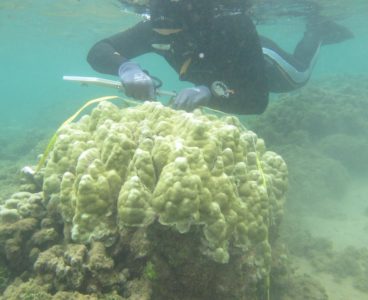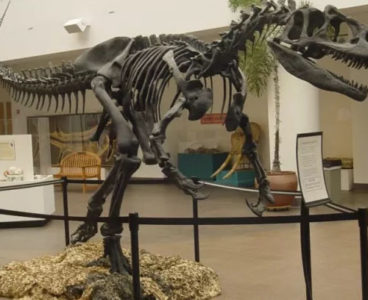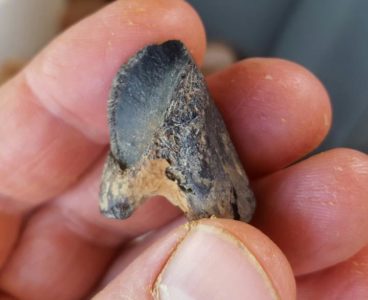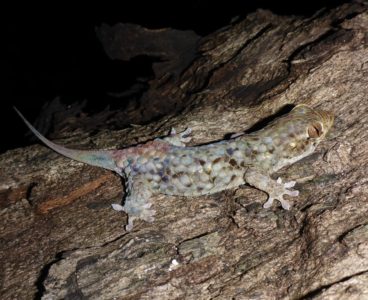The existence and causes of coral bleaching are recognized as an increasing world-wide environmental concern related to climate change. A number of experiments have been conducted since the early 1970s at the Hawai’i Institute of Marine Biology’s (HIMB) Coral Reef Ecology Laboratory in Kāne’ohe Bay, Hawai’i and the Mid-Pacific Marine Laboratory (MPL) at Enewetak, Marshall…
Gigantic Crocodile with T. Rex Teeth Was a Top Land Predator of the Jurassic in Madagascar
Little is known about the origin and early evolution of the Notosuchia, hitherto unknown in the Jurassic period. New research on fossils from Madagascar, published in the peer-reviewed journal PeerJ by Italian and French paleontologists, begin to fill the gap in a million-year-long ghost lineage. Deep and massive jaw bones armed with enormous serrated teeth that are…
How the Famous Cleveland-Lloyd Dinosaur Bone Bed Came to Be
The Cleveland-Lloyd Dinosaur Quarry is the densest collection of Jurassic dinosaur fossils. Unlike typical Jurassic bone beds, it is dominated by the famous predatory dinosaur Allosaurus. Since its discovery in the 1920s, numerous hypotheses have been proposed to explain the origin of the quarry. Were the dinosaurs poisoned? Did they die due to drought? Were…
Rare Tooth Find Reveals Horned Dinosaurs in Eastern North America
A chance discovery in Mississippi provides the first evidence of an animal closely related to Triceratops in eastern North America. The fossil, a tooth from rocks between 68 and 66 million years old, shows that two halves of the continent previously thought to be separated by seaway were probably connected before the end of the…
A New Species of Gecko with Massive Scales and Tear-Away Skin
Many lizards can drop their tails when grabbed, but one group of geckos has gone to particularly extreme lengths to escape predation. Fish-scale geckos in the genus Geckolepis have large scales that tear away with ease, leaving them free to escape whilst the predator is left with a mouth full of scales. Scientists have now…




